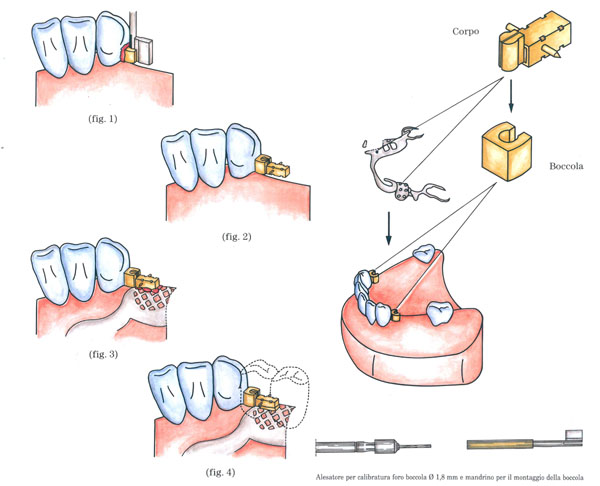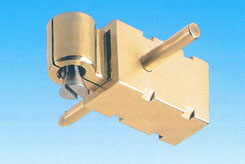
| M.G.16 Attachments
Technical features |
|
|
Female |
Patrix |
|
• Five materials: resin alloy, ceramic alloy, ceramic alloy suitable to be cast on, stainless stell, calcinable plastic |
• Three components: male, sheath and pin • One material: stainless steel |

female male pin sheath


- Wax the female to the crown using the proper paralleling mandrel in axis with the alveolar ridge, leaving sufficient space for the papilla (Fig. 1)
- Investing the crown with the soldering female.
- Assemble the complete attachment (patrix with the female (Fig. 2)
- Go on with the surveying and the casting.
- Fix the sheath to the framework with resin (Fig. 3)
- Remove the male.
- Investing for the soldering.
- Insert the framework on the model and mount teeth on saddles (Fig. 4)
- Before the duplicating, remove the male, insert the pin and fill the sheath of plaster or silicon to prevent the infiltration of the resin.
- Procede with the finishing of the prosthesis.






 Printable version
Printable version  Request informations
Request informations  Tell a friend…
Tell a friend… 
